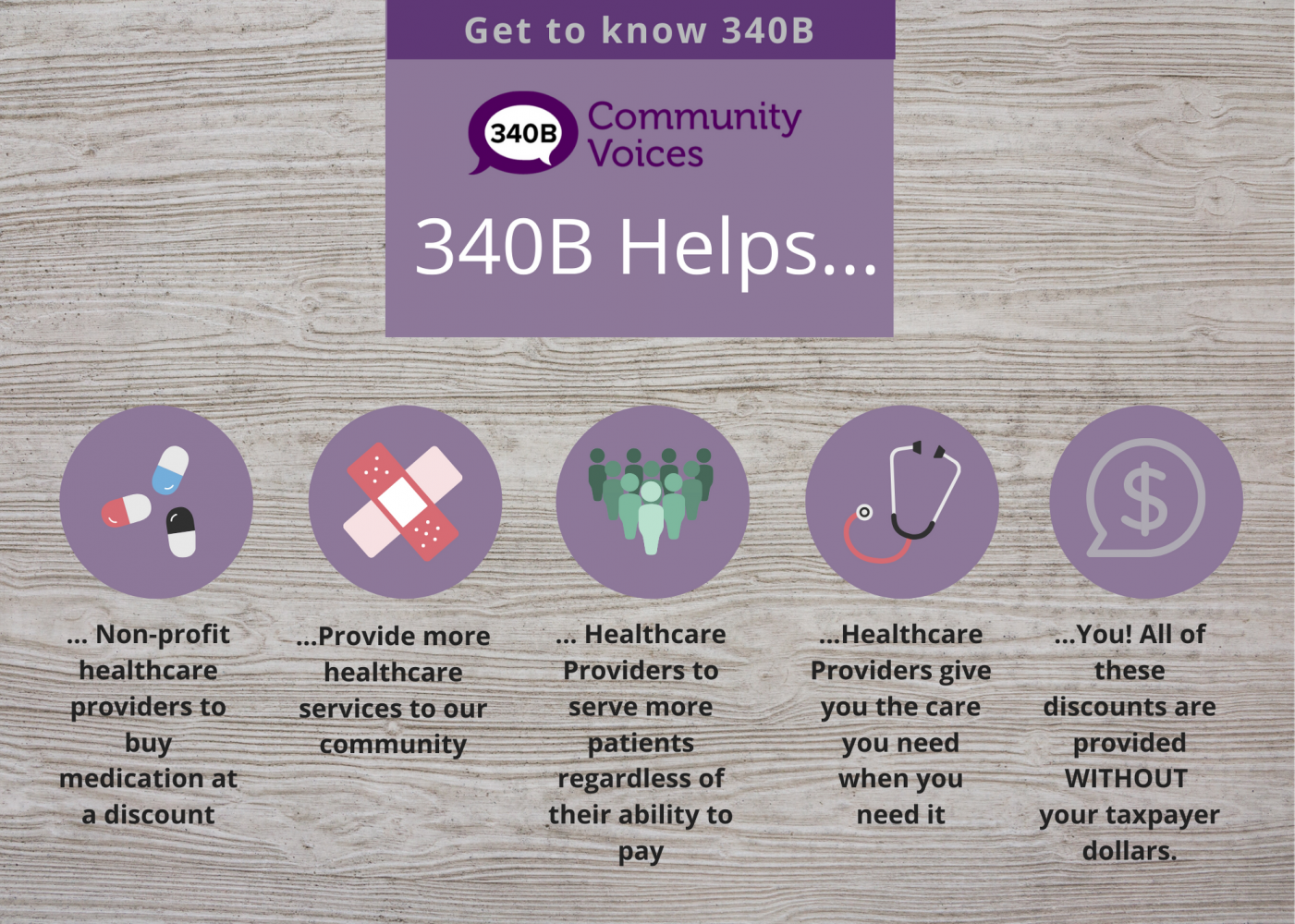First established in 1992 through bipartisan legislation, the federal 340B drug discount program offers a lifeline to the neediest and most underserved patients in this nation. The program operates on the simple principle of requiring pharmaceutical companies to provide drugs at a discounted price to certain types of safety net hospitals and clinics that, in turn, use their 340B savings to underwrite the cost of serving patients in their communities. In fact, that reinvestment in patients and communities is what has made the 340B program so successful. 340B providers can do more with their limited dollars to benefit the communities that they serve.
Over the past 25 years, the 340B program has consistently helped safety net providers meet the unique public health needs of their communities, and Congress has acted several times to extend program eligibility to additional categories hospitals. However, despite affecting just two percent of all drug sales in the United States, the program remains deeply unpopular within sectors of the pharmaceutical industry.

First established in 1992 through bipartisan legislation, the federal 340B drug discount program offers a lifeline to the neediest and most underserved patients in this nation. The program operates on the simple principle of requiring pharmaceutical companies to provide drugs at a discounted price to certain types of safety net hospitals and clinics that, in turn, use their 340B savings to underwrite the cost of serving patients in their communities. In fact, that reinvestment in patients and communities is what has made the 340B program so successful. 340B providers can do more with their limited dollars to benefit the communities that they serve.
Over the past 25 years, the 340B program has consistently helped safety net providers meet the unique public health needs of their communities, and Congress has acted several times to extend program eligibility to additional categories hospitals. However, despite affecting just two percent of all drug sales in the United States, the program remains deeply unpopular within sectors of the pharmaceutical industry.
Threats to the 340B Program
The pharmaceutical industry is attempting to distract the public from the realities of the program – which expands access to care and improves services for vulnerable patients at no cost to taxpayers – and projected an image of the program as one of the leading causes of high drug prices in the country.
While unfounded, unfair, and motivated to reduce the benefit of the 340B program for covered entities, sustained political activity by the pharmaceutical industry has resulted in several recent actions that are likely to result in legislative or administrative action adverse to the interests of 340B providers and their patients, including:
- A Senate Committee on Health, Education, Labor, and Pensions hearing where covered entities representatives and a pharmaceutical industry representative testified about the 340B program. This is the first time the Senate HELP committee has held a hearing dedicated solely to 340B (March 2018)
- A House Energy & Commerce Subcommittee on Oversight hearing where 340B covered entity witnesses were probed about their use of savingS (October 2017)
- A series of House Energy & Commerce Committee inquiry letters to several covered entities demanding an accounting for the use of 340B savings and revenue and strongly suggesting that the program should be limited to the uninsured (September 2017)
- A House Energy & Commerce Committee oversight hearing on the 340B program with the General Accounting Office (GAO) and Inspector General (OIG) witnesses testifying on the need for significant changes to the 340B program (July 2017)
- A House Energy & Commerce Committee leadership letter to the Health Resources & Services Administration (HRSA) calling for heightened scrutiny of 340B program participants, without a corresponding increase in scrutiny of drug company compliance with the program (June 2017)
- A final Executive Order on Drug Prices that proposed dramatically curtailing funds from the 340B program from being directed to some types of covered entities—one of the pharmaceutical industry’s goals (June 2017)
Protecting the 340B Program
Without a significant and sustained effort to raise public awareness of the benefits of the 340B program, the program faces an uncertain future. Providers and their health care industry supporters have worked to defend the 340B program, recognizing its true value in providing patients with comprehensive care. What’s missing from this equation are patient and community leaders’ voices, the true beneficiaries of the 340B program, many of whom simply don’t know that they receive such a benefit or that it is at risk of being taken away.
Background on 340B Drug Pricing Program
Section 340B of the Public Health Service Act
The federal 340B Drug Discount Program is a lifeline that allows safety net providers to obtain prescription drugs at below-retail prices. The program was established with bipartisan support as part of the Veterans Health Care Act of 1992.
Health Resources & Services Administration (HRSA)
Office of Pharmacy Affairs, located within the Health Resources and Services Administration of the Department of Health and Human Services, administers the 340B program. HRSA and OPA are located in Rockville, MD and are responsible for interpreting and implementing the 340B law.
OPA Information System (OPAIS)
Find 340B covered entities near you. Search the Office of Pharmacy Affairs Database to find Disproportionate Share Hospitals; Federally Qualified Health Centers; Rural Referral Centers; Sole Community Hospitals; Community Health Centers; Hemophilia Treatment Facilities; and Ryan White Clinics that rely on the 340B program.
Myth vs. Fact – 340B Coaltion
There’s a lot of misinformation about the 340B program out there. Get the facts about the intent of the program, who benefits from the 340B program, and why the 340B program is necessary to communities across the country.
Key Acronyms and Terms Related to the 340B Program
340B Health has listed several key acronyms and terms related to the 340B program. This includes government agencies, types of covered entities, legislation, nonprofit organizations, vendors and more.
